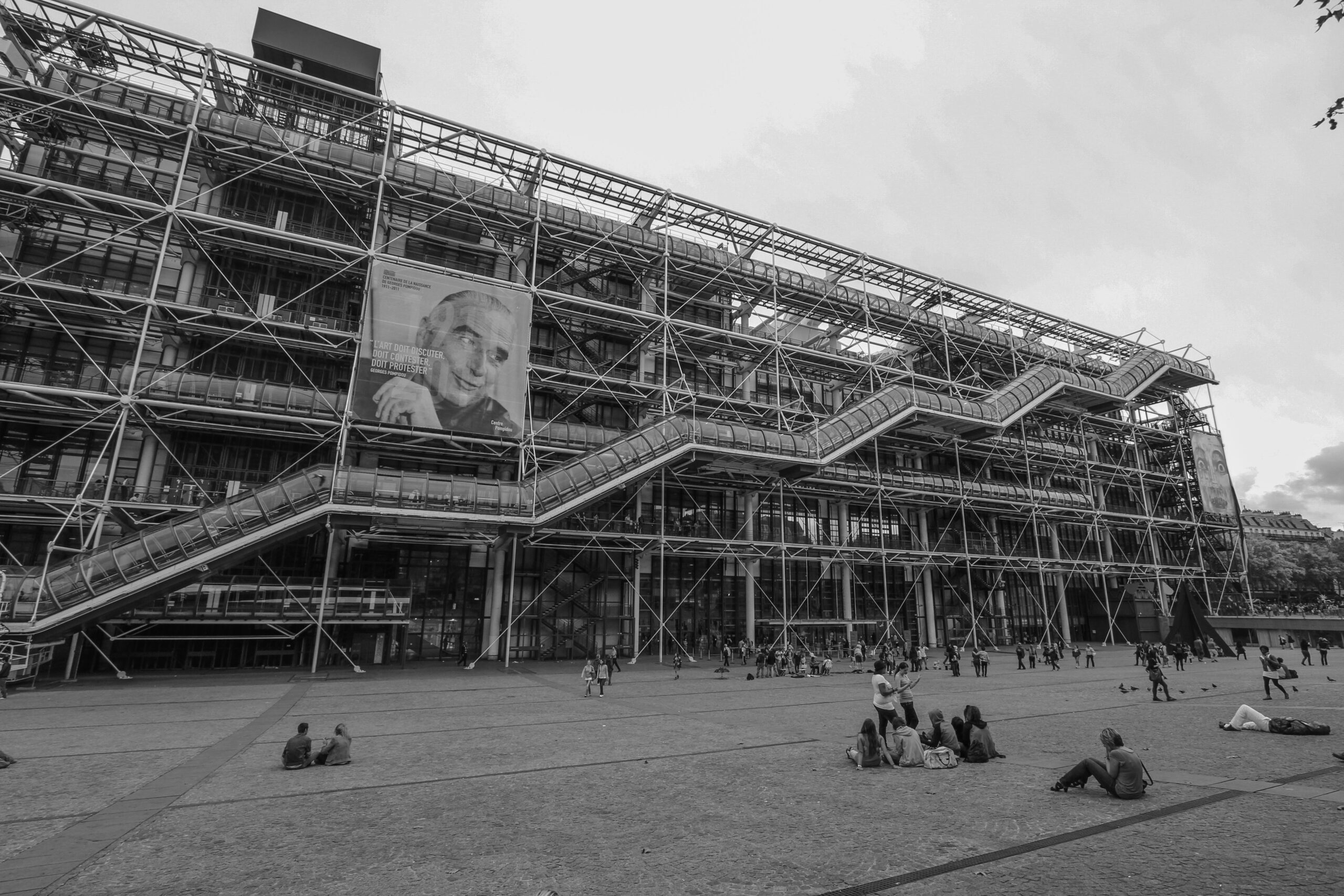The exposed diagonal tube running across the Centre Pompidou in Paris is more than just an eccentric detail of modernist architecture. In the midst of France’s latest political storm, it reads as an allegory for the nation’s financial and political path: a single bold line rising with conviction, breaking into angles, shifting direction, uncertain where it will finally lead. The building’s famous decision to wear its guts on the outside—its pipes, ducts, and escalators displayed in plain view—mirrors the way France’s internal fractures are now visible to the world, as the stock market reacts to a government teetering on the edge of collapse.

French stocks have slid in recent days as the government of Emmanuel Macron, once hailed as a stabilizing centrist force, now finds itself paralyzed by populist experiments that have alienated both its liberal core and its conservative flank. The CAC 40, home to France’s global champions in luxury, aerospace, and energy, has shed value as investors grapple with the realization that Paris can no longer project the aura of predictable governance. What was once Macron’s calling card—a technocratic, investor-friendly France positioned as a European growth engine—has been undone by a series of miscalculations, from fuel tax hikes that sparked the yellow-vest revolt to half-hearted labor reforms that pleased neither workers nor business elites.
The promise of Macronism was that it could transcend the old left-right divide with pragmatic reforms. Instead, the policies often veered into hollow gestures that carried the style of populism without the substance of solutions. Slogans about restoring purchasing power and reinventing Europe clashed with austerity-tinged budgets and tax tweaks that seemed to favor the few. The populist flavor of Macron’s campaigns—anti-elite language packaged in the body of a globalist technocrat—proved corrosive. It left the political center weakened and emboldened the extremes on both sides, who now scent the possibility of power. The markets, acutely aware of this, are pricing in not only immediate political risk but also the longer-term instability of a France drifting toward fragmentation.
Viewed through this lens, the diagonal tube of the Pompidou is no mere structural quirk. It becomes a chart frozen in steel, the market line of Macron’s presidency itself: rising with hope in the early years, breaking into sharp angles as populist backlash struck, wavering as coalitions faltered, and finally pointing into uncertainty. Just as the escalator seems precariously suspended against the sky, so too does France’s economy appear dependent on a fragile frame that no longer inspires confidence.
In the square below, ordinary Parisians and tourists linger, detached from the drama above them. Their indifference underscores another truth: politics in Paris may swing violently, markets may convulse, but daily life continues—until, suddenly, it doesn’t. If the scaffolding fails, if the upward line breaks into freefall, the consequences will reach far beyond the trading screens of La Défense and the glass towers of London. A political collapse in France would reverberate across Europe’s financial core, shaking the credibility of the eurozone at a time when unity is needed most.
The diagonal line across the Pompidou thus stands as a symbol of the present moment. It is the embodiment of French equities under pressure, of a political project that mistook slogans for substance, of a government now tottering under the weight of contradictions. What began as a promise of modernization has become an exercise in survival, and the markets, like the architecture, reflect every fracture, every wobble, every fragile joint that keeps the whole edifice from crashing down.